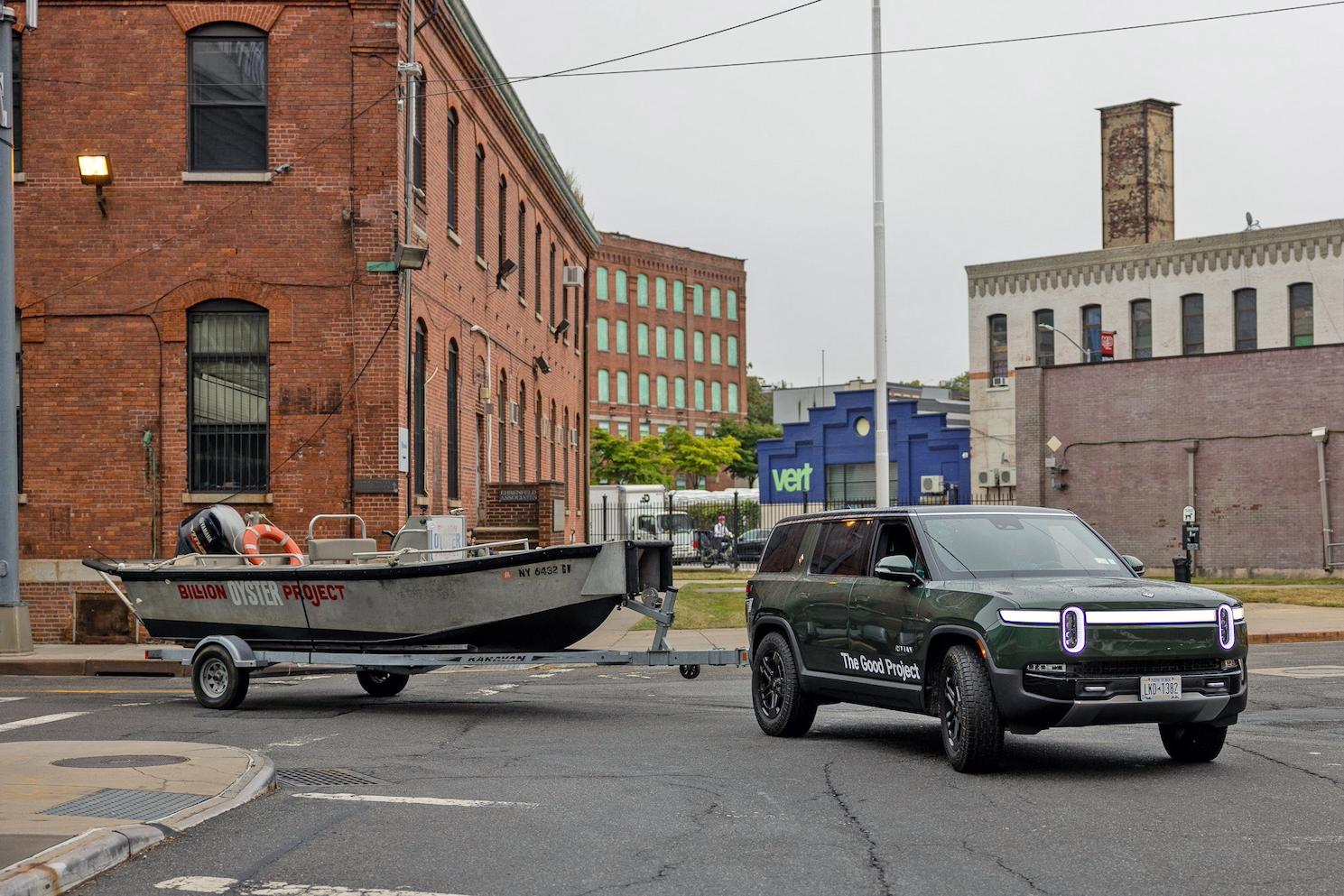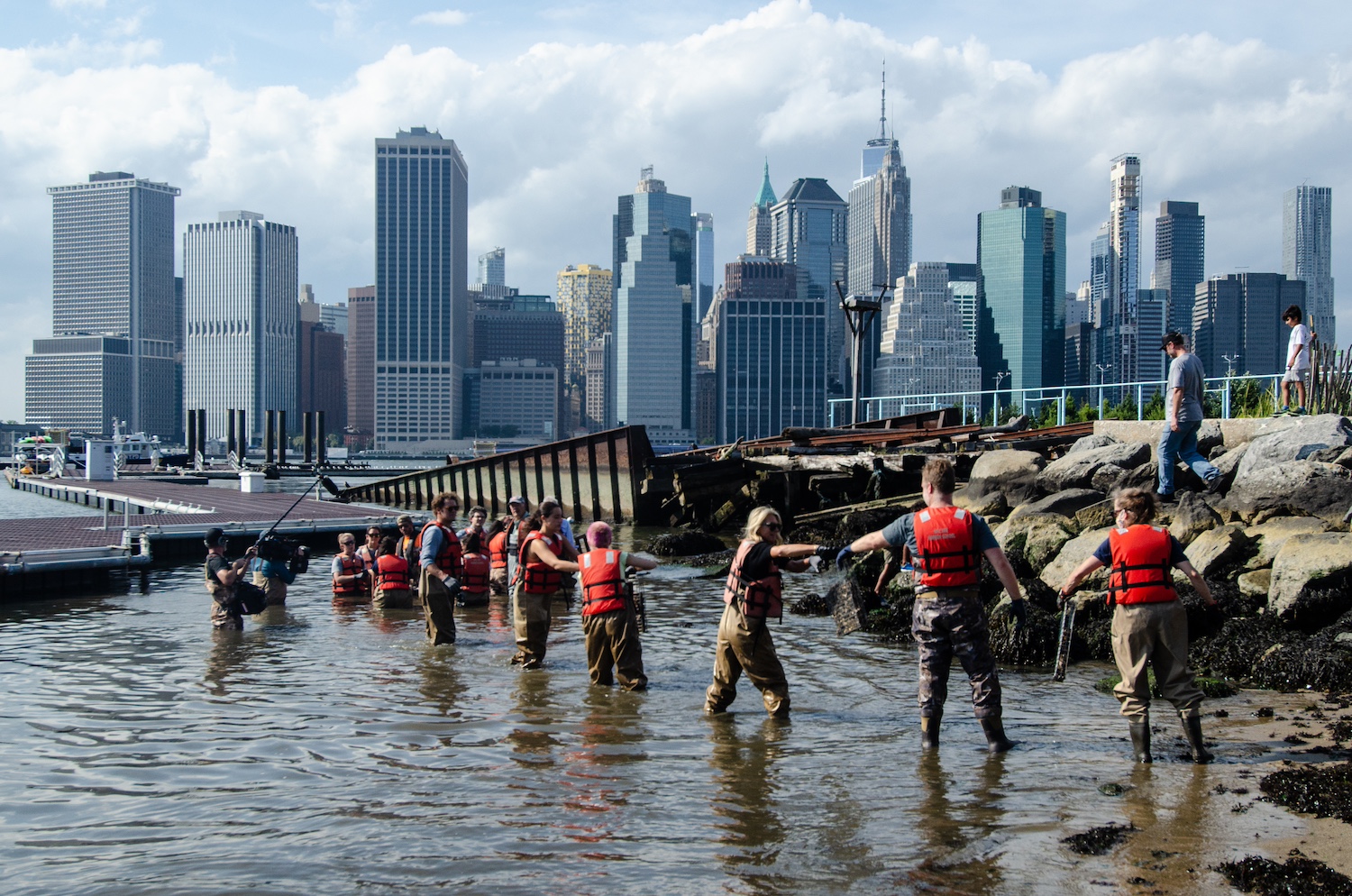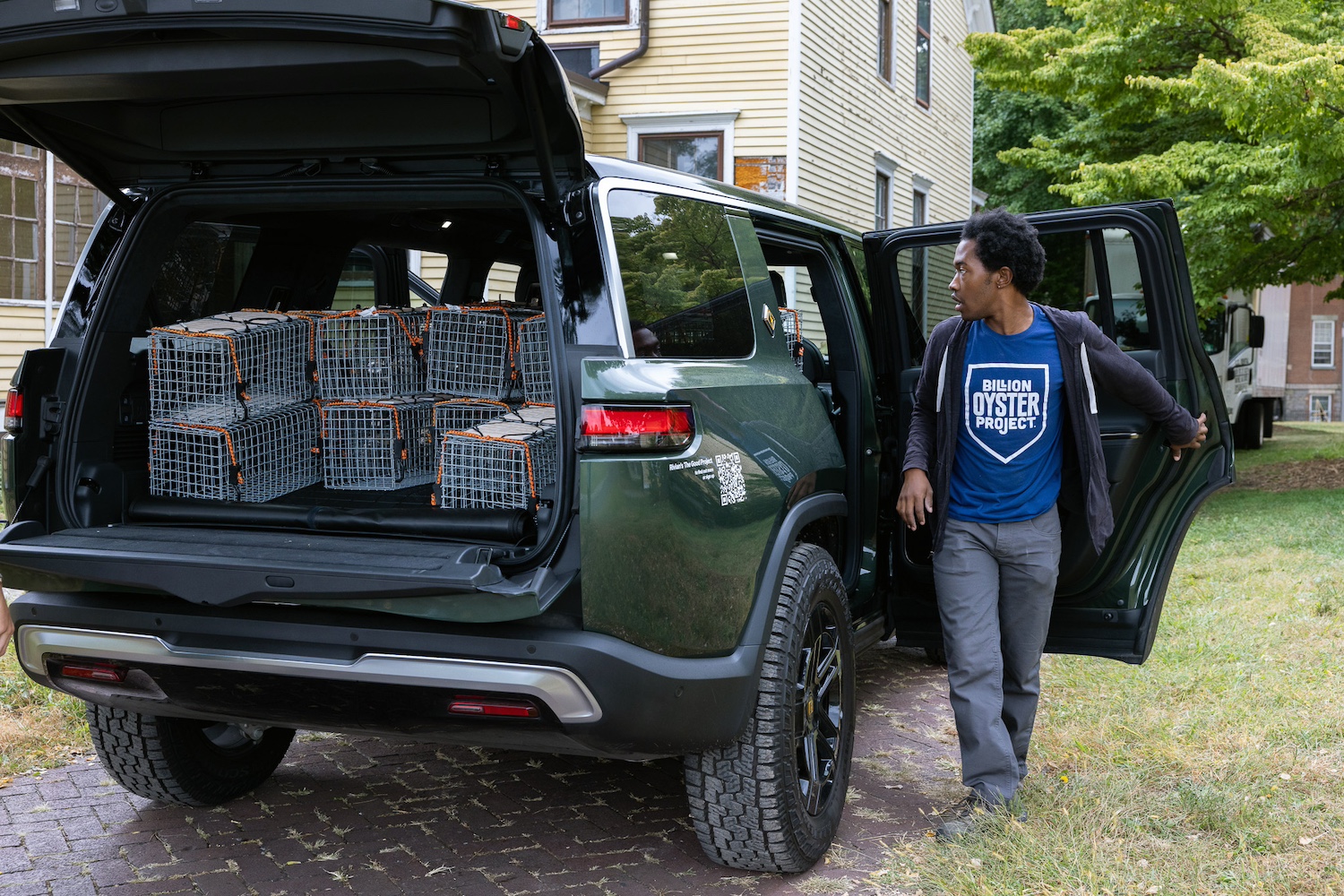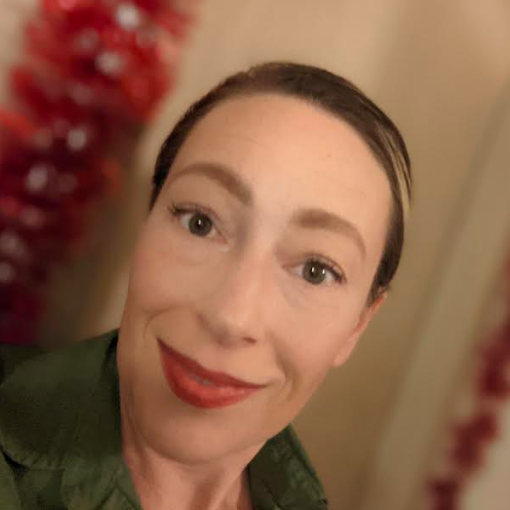
The Rivian R1 loaned to the Billion Oyster Project to help with tasks like pulling boats and moving gear as a part of The Good Project. (Image courtesy of Rivian.)
The Billion Oyster Project worked diligently over the past decade to bring oyster reefs back to the New York Harbor. This year, it received a boost from electric vehicle manufacturer Rivian’s The Good Project. The vehicle loan program allows participating nonprofits to borrow one of the brand’s electric SUVs, the R1, for short stints. This helps them get the heavy lifting and transporting done without the cost of purchasing, maintaining or storing a vehicle.
The “Big Oyster”
“There's a great saying, ‘Before New York was the Big Apple, it was the Big Oyster,’” Jessi Olsen, the corporate partnerships manager at Billion Oyster Project, told TriplePundit. “There were so many oysters in the harbor that you could literally just take down a bucket, scoop up and pull up oysters.”
Before New York’s famous hot dog carts, there were oyster carts, and oysters were one of New York’s biggest exports, she said. Colonization, commercialization and industrialization decimated the oyster population, as well as the rocky, shell-covered harbor bottom that supported their reproduction.
“There were so many oysters consumed in the harbor and so many oysters exported away, that there wasn't … what the Indigenous folks call an honorable harvest,” Olsen said. If the shells had been put back in the harbor instead of being used as landfill to expand the city, the situation may not have gotten as dire as it did. “Basically, the oyster became functionally extinct,” she said.

What makes oysters so important?
Mollusks, including oysters, are filter feeders, which makes them integral to keeping bodies of water like the New York Harbor clean. Each adult oyster can remove contaminants, like nitrogen and algae, from over 50 gallons of water daily.
Olsen cited an experiment organized by Pete Malinowski, Billion Oyster Project’s executive director and co-founder, with students at the New York Harbor School before the project officially launched as an example of how well the process works.
“They took a big tank full of harbor water that was very murky and gross, filled it with oysters, and in the course of the day, the oysters filtered the water and it was clear,” she said. “Imagine that filtering power times 200,000 acres. That meant the water here was super clear and super healthy [prior to colonization].”
Restoring the reefs with help from Rivian
The Billion Oyster Project has worked to restore the oyster reefs in New York Harbor since 2014. It boasts 19 acres of restored reef home to 140 million oysters and aims to hit the 1 billion oyster mark by 2035, which is the number needed for a self-sustaining population that will empower a healthy ecosystem, Olsen said.
The project relies heavily on students, volunteers, and trained citizen scientists to conduct research and restore the reefs. By collaborating with the public, the hope is that New Yorkers will be inspired to become stewards of the harbor, she said.
“The Good Project launched just at the tail end of our field season, which is kind of a wonderful time,” Olsen said. “[It came at a] critical moment that was really, really busy for us, and being able to access a vehicle during that time was super helpful.”
The end of the field season involves community water testing and monitoring, refurbishing and switching out oyster research station cages. The educational team is getting ready for the school year, and it’s when the program hosts its annual fundraiser, she said.
“We couldn’t think of a better way to kick off The Good Project than starting in Brooklyn with Billion Oyster Project. Their unwavering commitment to restoring oyster reefs to New York Harbor and marine habitat biodiversity is such a powerful example of the type of work The Good Project was founded to support,” Tony Caravano, the senior director of experiential marketing, told 3p in an email. “Seeing our vehicles in action to help enable this important work is an inspiration to us at Rivian and shows that our vehicles can help organizations go the distance to do meaningful good.”

The Good Project is a good fit
"The Rivian had a lot of space, which was really the big thing we needed,” Olsen said.
As an electric vehicle, it had the extra benefit of not requiring gas or producing tailpipe emissions, and its charge lasted long enough that it didn’t need to be plugged in during the week that it was on loan, she said.
“We really put that truck through the ringer,” Olsen said. “It was carrying old stinky oyster cages on one day and water quality samples on another day and hauling a boat on another day … [The] Billion Oyster Project team really likes to try everything out and push things to the limit, especially in terms of gear. So we were very, very excited to kind of throw everything and anything at the truck.”
While there are foreseeable limitations for some use cases — such as if the truck were needed for long distances, in remote areas without a charging infrastructure, or as a permanent part of a fleet — Rivian’s project has been the ideal fit for the Billion Oyster Project’s needs.
Nonprofits in Denver, Austin, Brooklyn and Atlanta can apply to join the short term vehicle loan program, where an R1 will be available at local Rivian retailers. The EV maker is particularly interested in partnering with programs that match up with the Rivian mission to “keep the world adventurous forever,” Caravano said.
“Our vehicles are built for adventure,” he said. “They are ready for action. That’s why we want to put them in the hands of people and organizations who are going to leverage their performance and capability to make this world a better place for us today and for future generations."
The Billion Oyster Project gets its name from the goal to get one million New Yorkers to put one billion oysters in the water. The idea is that once residents are involved, they’ll be inspired to make a larger change in the world, Olsen said. The more support they get, the further restoration projects like these can go.

Riya Anne Polcastro is an author, photographer and adventurer based out of Baja California Sur, México. She enjoys writing just about anything, from gritty fiction to business and environmental issues. She is especially interested in how sustainability can be harnessed to encourage economic and environmental equity between the Global South and North. One day she hopes to travel the world with nothing but a backpack and her trusty laptop.














